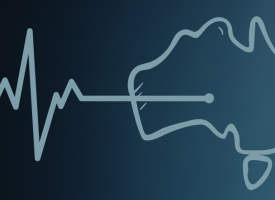Media Release: Ambulance ramping figures highlight need for lasting reform, not short-term solutions
The President of the Australian Medical Association in South Australia (AMA SA) Associate Professor Peter Subramaniam says September’s ambulance ramping figures underscore the need for urgent, lasting reform to ease the pressure on public hospitals.
The President of the Australian Medical Association in South Australia (AMA SA) Associate Professor Peter Subramaniam says September’s ambulance ramping figures underscore the need for urgent, lasting reform to ease the pressure on public hospitals.
According to the SA Health dashboard, 4,557 hours were lost on the ramp across Adelaide’s public hospitals last month. Although it marks an improvement from the record highs in winter, it’s still significantly worse than September 2024 when 3,106 hours were lost on the ramp.
‘South Australia’s stubbornly high ramping figures indicate that the health system is still failing to meet growing community demand,’ A/Prof Subramaniam says.
‘Our hospital system is under enormous pressure, with beds routinely occupied by patients who no longer need acute hospital care but have nowhere else to go.’
A/Prof Subramaniam has welcomed government action to create an additional 120 ‘step down beds’ in Adelaide but says it’s not a lasting solution.
‘Transitional care beds, like those at the Pullman Adelaide, can ease immediate pressure by creating much-needed capacity for emergencies and planned surgery, but they’re a stop-gap measure only,’ he says.
‘Much more needs to be done to secure long-term, sustainable hospital capacity by investing in general practice, aged care, and the vital connections between them.’
A/Prof Subramaniam says the real solution lies in building a connected and sustainable system of care. AMA SA has been calling for:
- Urgent investment in aged care capacity to ensure older Australians aren’t stuck in hospitals longer than necessary
- An overhaul of Medicare to ensure GPs can provide comprehensive care for people in their communities – including in aged care facilities - to prevent costly hospital presentations
- Stronger links between acute and community care to ensure GPs are informed when patients are discharged to their homes or to transitional care and then their homes
- Stronger career support for public hospital doctors to protect and preserve the existing clinical workforce
- Mapping of the medical workforce to identify and address gaps so South Australia has enough doctors working where they’re needed
- A new hospital funding arrangement between the federal and state governments to ensure public hospitals are sufficiently funded now and into the future
‘Easing the pressure on our public hospitals requires cooperation and commitment from both the South Australian and Australian Governments for adequate and urgent investment in public hospitals, general practice and aged care,’ A/Prof Subramaniam says.
‘AMA SA’s Access to Care Round Table in May also underscored the need for to improve the vital connections between the different parts of the health system so doctors can care for people in their communities and prevent costly hospital presentations.’
For more information please contact Media Manager Ben Terry on 0478 847 604.



